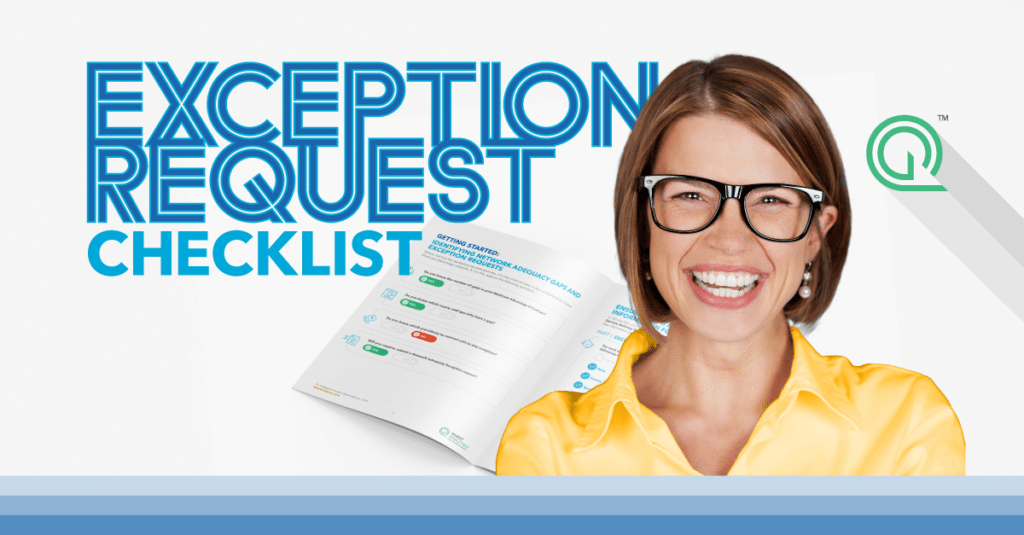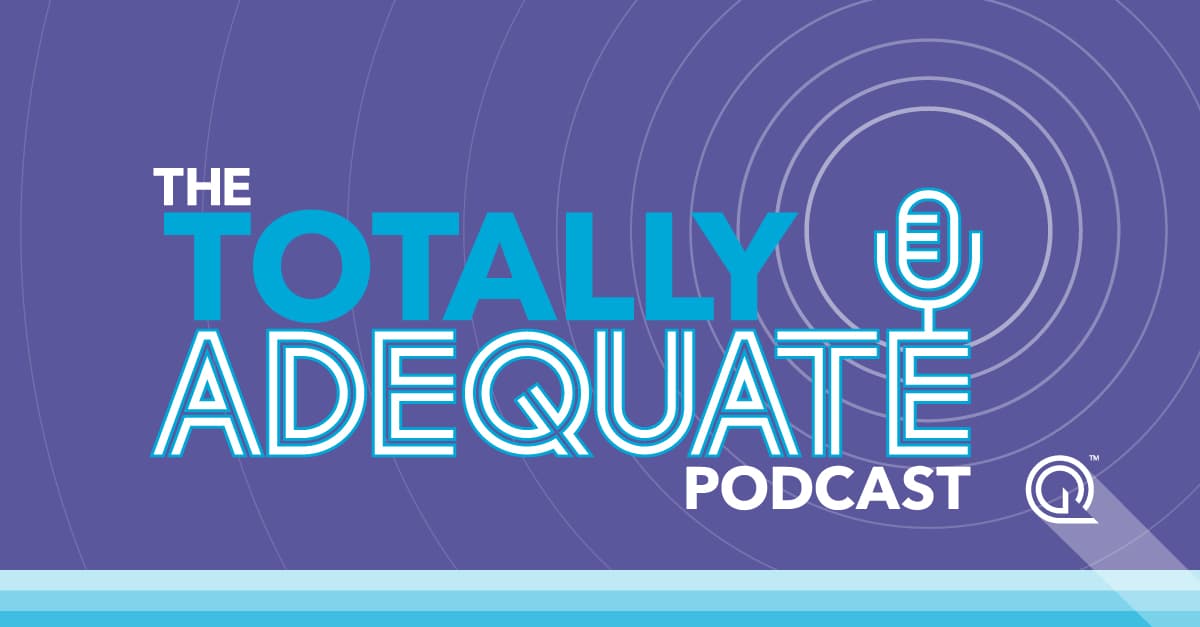Raise your hand if you’ve ever had difficulties meeting network adequacy criteria. Well, you’re not alone. Submitting an exception request for network adequacy involves multiple components, and we’re here to guide you through the process.
What is Network Adequacy?
Before jumping into exception requests, let’s go over some basics. Medicare Advantage Organizations (MAOs) must comply with network adequacy standards in every county they operate in. These criteria are in place to ensure that MAOs have sufficient doctors, hospitals, and healthcare specialists available to provide timely and appropriate care to their members.
Demonstrating Compliance: Network Adequacy and HSD Tables
MAOs must demonstrate that their provider network meets the network adequacy requirements for the number of primary care providers (PCPs) and specialists within the designated time and distance standards. To fulfill this requirement, MAOs need to submit their provider and facility Health Service Delivery (HSD) tables to the Network Management Module (NMM) of the Health Plan Management System (HPMS). CMS will review the HSD tables to determine if the provider network meets the requirements.
Tip: Read CMS Changes in the Network Adequacy Application Process for Medicare Advantage Organizations to learn more about the MAO application process.
What are Exception Requests to Network Adequacy Criteria?
When MAOs can’t meet network adequacy standards, they may be allowed to submit an exception to the Centers for Medicare & Medicaid Services (CMS). An exception request allows organizations to explain their inability to meet the published network adequacy criteria. Typically, MAOs use the exception process when the supply of providers or facilities is scarce, making it impossible for them to obtain contracts that meet CMS’s network adequacy criteria. In other words, they’re saying, “Hey, we’re trying our best, but it’s tough out there.”

TIP: Use our FREE checklist to create a compelling case for your network adequacy exception request. This checklist guides you through the process, ensuring you have all the required details for a successful request. Download your checklist now to get started!
Exception Requests Checklist
When Can Medicare Advantage Organizations Request an Exception to Network Adequacy Criteria?
MAOs can request an exception to network adequacy criteria when both of the following conditions occur.
Condition 1: Certain providers or facilities are not available for the MA plan to meet the network adequacy criteria as shown in the Provider Supply file for the year for a given county and specialty type.
Condition 2: The MA plan has contracted with other providers and facilities that may be located beyond the limits in the time and distance criteria but are currently available and accessible to most enrollees, consistent with the local pattern of care.1
What are Valid Rationales for Submitting Exception Requests?
MAOs may request exceptions to network adequacy criteria under certain circumstances. Some examples of valid reasons for an exception request.
Provider No Longer practicing: If a provider has retired, passed away, or simply stopped practicing.
Exclusive Contracts: If a provider exclusively contracts with another organization and not with the MAO seeking an exception.
Mismatched Service Details: If a provider’s listed address or specialty type doesn’t match what they offer.
Opt-Out of Medicare: If a provider has opted out of Medicare.
Sanctioned Providers: If a provider is listed on the List of Excluded Individuals and Entities.
Apart from the valid reasons mentioned above, there are a few more rationales an organization can utilize for exception requests:
Pattern of Care: The organization can provide evidence demonstrating that the contracted network meets or exceeds the original Medicare pattern of care.
Telehealth: The organization may use telehealth to meet healthcare access requirements, as long as it is provided in a manner consistent with original Medicare.
Mobile Providers: If an organization utilizes Mobile Providers, they must be qualified and deliver services on a scheduled basis.
What are Invalid Rationales for Submitting Exception Requests?
In contrast, there are a few things that CMS doesn’t consider valid reasons for an exception request.
Inability to Establish a Contract: The inability to successfully negotiate and establish a contract with a provider or facility.
Failure to Reach a Financial Agreement: The inability to come to a financial contracting agreement with a provider or facility.
Reluctance to Cross State or County Lines for Contracting: The organization does not want to cross state or county lines to contract with a provider or facility.
How to Submit an Exception Request?
Now, that we’ve talked about the why and when of exception requests, let’s unpack the how. MAOs must adhere to two key elements in line with CMS’s guidelines when requesting an exception:
- Complete the Medicare Advantage Health Service Delivery Exception Request Template accurately.
- Provide compelling and data-backed evidence.
Tip: Have information on both contracted and non-contracted providers at hand. This will help fulfill these essential criteria more efficiently.
What's the Timeline for Exception Requests?
The submission timeline includes stages of application, deficiency response, and potential exception review, concluding with final notification of the application’s success or denial. Each step, from the initial HSD table submission to the response to any Notice of Intent to Deny (NOID), must be conducted within specified CMS timeframes.
Keep in Mind: An Exception Request Approval Isn't Forever
While an exception request approval is a significant achievement, it’s not a lifetime guarantee. Each year, MAOs must submit an exception request. It’s like an annual membership renewal but for your network adequacy exception. Discover how a health plan reduces, expedites, and enhances network exception requests with Quest Enterprise ServicesTM Exceptions.
How Does CMS Evaluate Exception Requests?
Once an exception request is submitted, CMS evaluates each request on a case-by-case basis. They consider factors such as the impact on beneficiaries’ access to care, the availability of alternative options for essential services, and the credibility and thoroughness of the MAO’s request. Based on this evaluation, CMS may approve the exception request if it meets the required criteria, request additional information or modifications, or deny the request.
5 Best Practices for Filling Out the MA HSD Exception Request Template
To improve your chances of success, here are five tips for completing the Medicare Advantage HSD Exception Request Template.
- Use the correct naming convention when saving the template, including the Contract Number, SSA code, and HSD Specialty Code.
- Enter provider information into the designated sections, rather than submit it as an attachment.
- Include specific data sources and respond to each question in the template.
- Use the correct contract ID when submitting requests for multiple contracts.
- Use Adobe Acrobat to fill out the Exception Forms to ensure compatibility.
Reducing, Expediting, and Enhancing Network Adequacy Exception Requests
Exception requests are vital tools for MAOs facing challenges in meeting network adequacy requirements. By understanding the intricacies of these requests, following best practices for submission, and leveraging Quest Enterprise Services Exceptions, MAOs can optimize their exception request management processes. Contact us today to learn more.
Related Articles on Exception Requests for Network Adequacy
Proven Solutions for Your Provider Network Management
Looking to simplify your workload? Let Quest Analytics take on the heavy lifting! Our solutions and dedicated team specialize in provider data accuracy and provider network adequacy for various lines of businesses, including Medicare Advantage, Medicaid and Commercial. Schedule a strategy session today and see how we can help you every step of the way.














